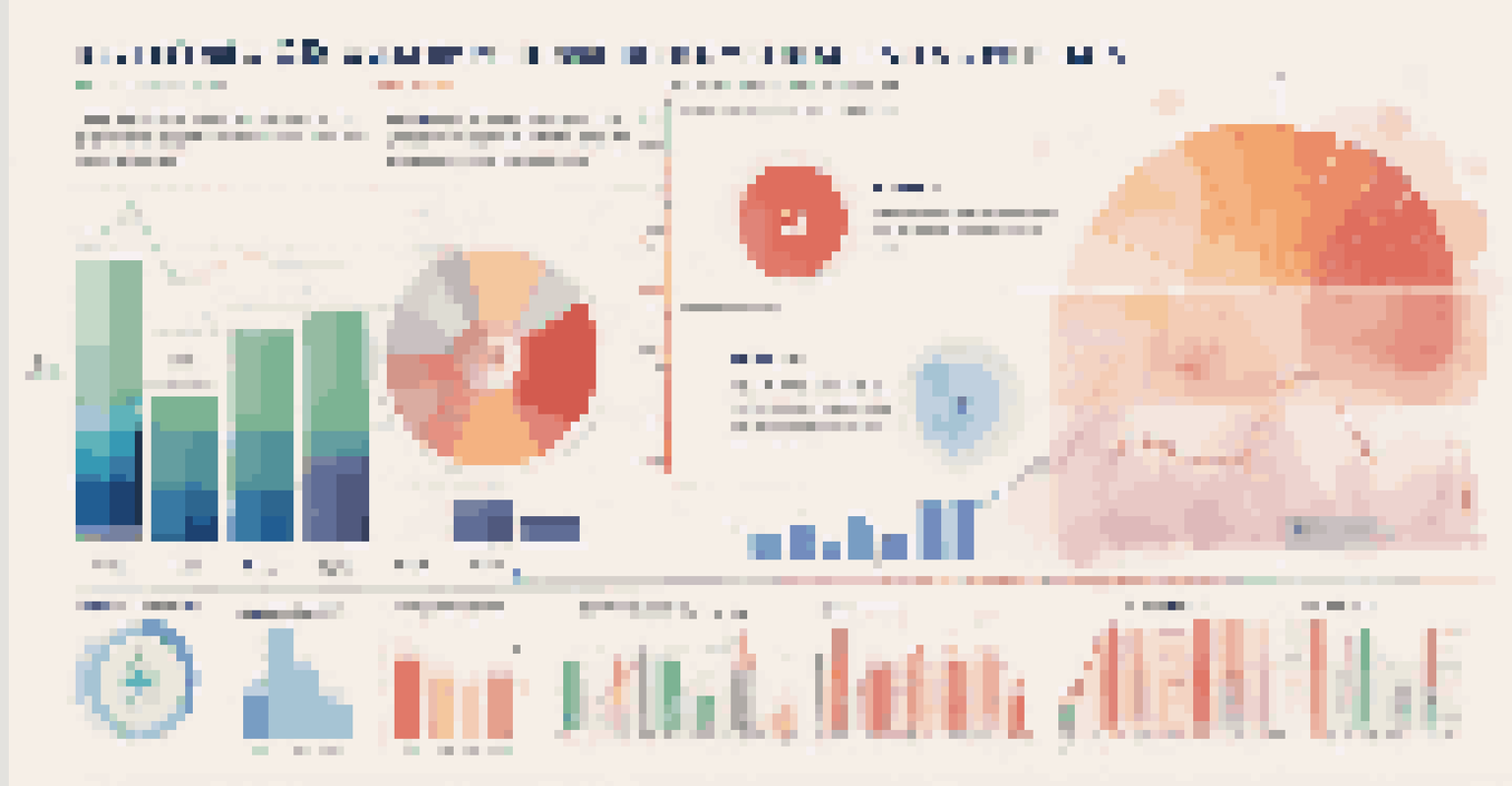Central Banks and the Role of Economic Indicators Explained

What are Central Banks and Their Purpose?
Central banks are the financial institutions that manage a country's currency, money supply, and interest rates. They play a critical role in maintaining economic stability and fostering growth. By controlling inflation and unemployment, central banks aim to create a favorable environment for economic activities.
The greatest danger in times of turbulence is not the turbulence; it is to act with yesterday's logic.
Their primary functions include issuing currency, overseeing commercial banks, and implementing monetary policy. This often involves adjusting interest rates to influence spending and investment in the economy. For example, lower interest rates can encourage borrowing, while higher rates may help curb inflation.
In essence, central banks act as the backbone of a country's financial system, ensuring that economic fluctuations are managed effectively. Their decisions can have ripple effects that extend beyond national borders, influencing global markets and economies as well.
The Importance of Economic Indicators
Economic indicators are key statistics that provide insights into the health of an economy. They include data such as GDP growth, unemployment rates, and inflation levels. By analyzing these indicators, central banks can gauge the economic climate and make informed decisions regarding monetary policy.

For instance, a rising GDP indicates economic growth, which might lead a central bank to raise interest rates to prevent overheating. Conversely, high unemployment rates may prompt lower rates to stimulate job creation. These indicators serve as vital signposts for understanding economic trends and guiding policy direction.
Central Banks Ensure Economic Stability
Central banks manage a country's currency and interest rates to promote economic stability and growth.
In summary, economic indicators are essential tools for central banks, helping them navigate complex economic landscapes. By closely monitoring these statistics, they can better respond to changing conditions and support sustainable growth.
How Central Banks Use Economic Indicators
Central banks rely heavily on economic indicators to shape their monetary policies. They analyze various data points to assess whether the economy requires stimulus or restraint. For example, if inflation is rising, a central bank may interpret this as a signal to increase interest rates to maintain price stability.
In the long run, it is the economy that matters, and the most important thing is to manage the economy for the good of all.
In addition to inflation, central banks consider other factors such as consumer confidence and manufacturing output. These indicators help them understand the broader economic picture and anticipate future trends. By responding proactively to these signals, central banks can mitigate potential economic downturns.
Ultimately, the interplay between central banks and economic indicators is crucial for effective monetary policy. This relationship ensures that policy decisions are based on solid data, fostering a stable economic environment for all.
Key Economic Indicators Central Banks Monitor
Several key economic indicators are essential for central banks in their decision-making processes. Among the most important are Gross Domestic Product (GDP), inflation rate, and unemployment rate. Each of these indicators provides valuable insights into the economy's performance and potential challenges.
GDP measures the total value of goods and services produced within a country, serving as a broad indicator of economic health. The inflation rate, often measured by the Consumer Price Index (CPI), indicates how quickly prices are rising, while the unemployment rate reflects the availability of jobs in the economy. Together, these indicators offer a comprehensive view of economic dynamics.
Economic Indicators Guide Policies
Central banks analyze key economic indicators like GDP and inflation rates to make informed monetary policy decisions.
By closely monitoring these key indicators, central banks can better assess economic conditions and respond accordingly. This proactive approach helps maintain stability and fosters an environment conducive to growth.
The Relationship Between Interest Rates and Economic Indicators
Interest rates play a pivotal role in the relationship between central banks and economic indicators. When central banks adjust interest rates, it can have significant effects on various economic activities, such as borrowing, spending, and investment. Lower interest rates typically encourage more borrowing, which can stimulate economic growth.
Conversely, higher interest rates can help control inflation by discouraging excessive borrowing and spending. This delicate balancing act requires central banks to pay close attention to economic indicators, as these data points can signal when it's time to adjust rates. For example, if inflation rises unexpectedly, a central bank may need to increase rates to stabilize prices.
Thus, the relationship between interest rates and economic indicators is integral to effective monetary policy. Central banks must remain vigilant and responsive to these signals to ensure a balanced and healthy economy.
Challenges Faced by Central Banks in Interpretation
Interpreting economic indicators is not always straightforward for central banks. Various factors can complicate their analysis, such as external shocks, geopolitical events, and changes in consumer behavior. These complexities can lead to conflicting signals, making it challenging to determine the best course of action.
For instance, a sudden spike in commodity prices may indicate inflation, but it could also stem from temporary supply chain disruptions. In such cases, central banks must carefully assess whether these indicators reflect a long-term trend or a short-term anomaly. This requires a nuanced understanding of the economic landscape and the potential implications of their decisions.
Interest Rates Impact Economic Activity
Adjusting interest rates influences borrowing and spending, making it essential for central banks to monitor economic indicators.
Ultimately, the ability to accurately interpret economic indicators is crucial for central banks. Their effectiveness in navigating these challenges can significantly impact economic stability and growth.
Future Trends in Central Banking and Economic Indicators
As economies evolve, central banks must adapt to emerging trends and challenges. The increasing complexity of global markets, technological advancements, and changing consumer behaviors all influence how central banks interpret economic indicators. For instance, the rise of digital currencies and fintech has added new dimensions to monetary policy considerations.
Additionally, central banks are increasingly leveraging data analytics and artificial intelligence to improve their understanding of economic indicators. These technologies can enhance their ability to forecast trends and make more informed decisions. However, they also require careful consideration of potential risks and ethical implications.

Looking ahead, the relationship between central banks and economic indicators will continue to evolve. Staying attuned to these changes will be essential for central banks to effectively manage monetary policy and support sustainable economic growth.